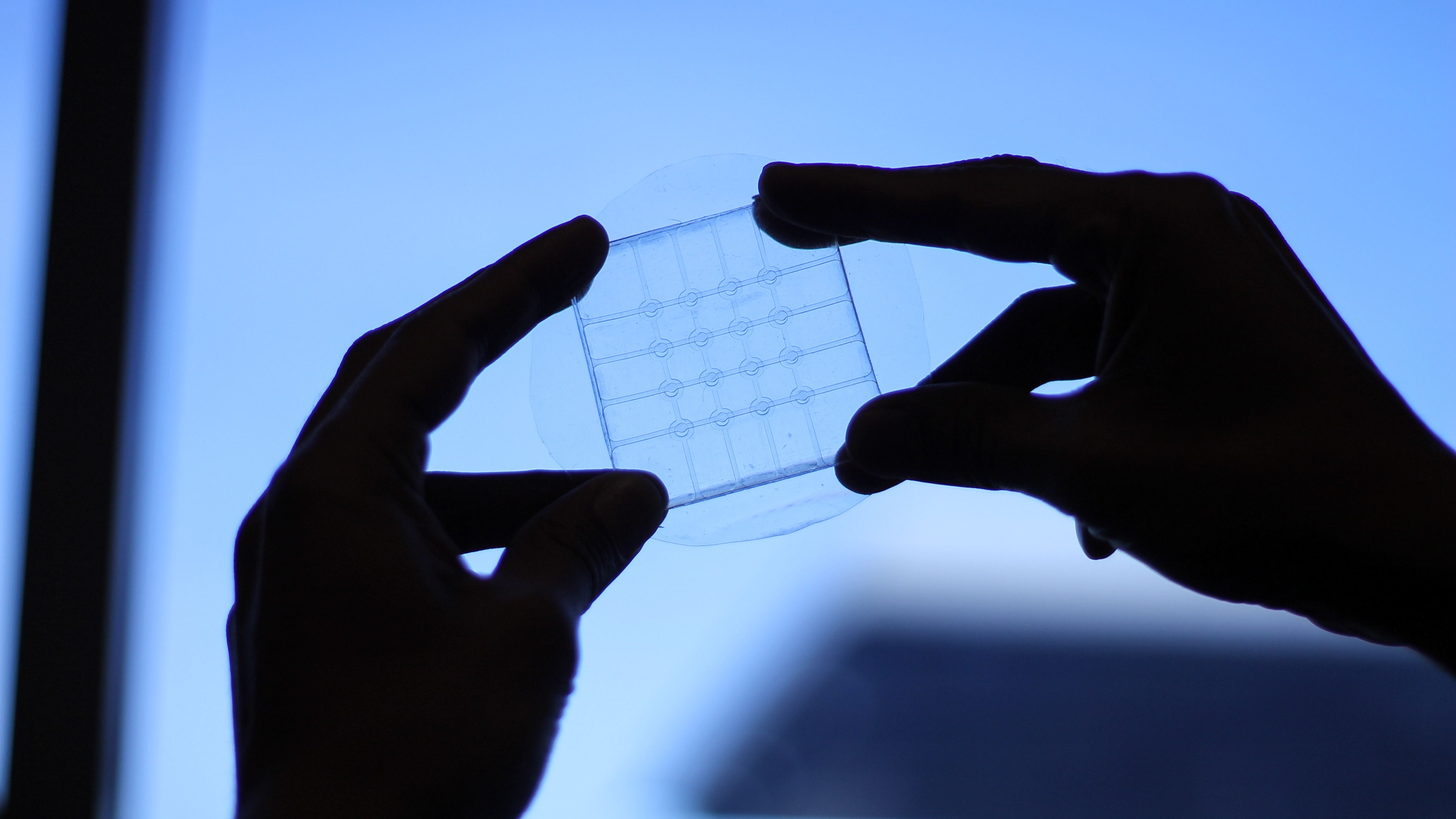This flexible sensor could let us make foldable touchscreens
Works while bent or stretched, too

Bendable, flexible touchscreens have been in development for what seems like years now. Every time CES rolls around, it feels like there's a new rumor that a smartphone manufacturer is building one.
This year, it's the turn of Samsung, with a purported 'Galaxy X' phone-sized device that can fold out to the size of a tablet. A prototype is supposedly in the works, due to be finished by the third quarter of 2017.
But the technology is maturing. Engineers at the University of British Columbia have developed an inexpensive sensor that is capable of detecting different kinds of touch even when stretched, folded or bent.
One compact package
"There are sensors that can detect pressure, such as the iPhone's 3D Touch, and some that can detect a hovering finger, like Samsung’s AirView. There are also sensors that are foldable, transparent and stretchable," said Mirza Saquib Sarwar, a PhD student in electrical and computer engineering at UBC.
"Our contribution is a device that combines all those functions in one compact package."
The prototype measures 5cm by 5cm, but the team says it could be easily scaled up with inexpensive, widely-available materials. It's made of a conductive gel sandwiched between two layers of silicone.
"It's entirely possible to make a room-sized version of this sensor for just dollars per square metre, and then put sensors on the wall, on the floor, or over the surface of the body—almost anything that requires a transparent, stretchable touch screen,” said Sarwar.
Get daily insight, inspiration and deals in your inbox
Sign up for breaking news, reviews, opinion, top tech deals, and more.
"And because it’s cheap to manufacture, it could be embedded cost-effectively in disposable wearables like health monitors."
Soft robots
As well as allowing for foldable phones and room-sized touchscreens, John Madden -- Sarwar's supervisor -- says that it could even be integrated into the skin of a robot to make human interactions safer.
"Currently, machines are kept separate from humans in the workplace because of the possibility that they could injure humans. If a robot could detect our presence and be ‘soft’ enough that they don’t damage us during an interaction, we can safely exchange tools with them, they can pick up objects without damaging them, and they can safely probe their environment," said Madden.
The details of the technology were published in the journal Science Advances.
